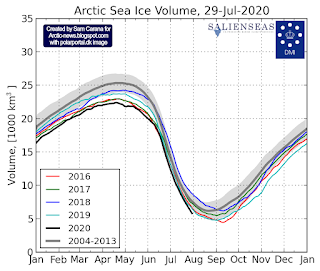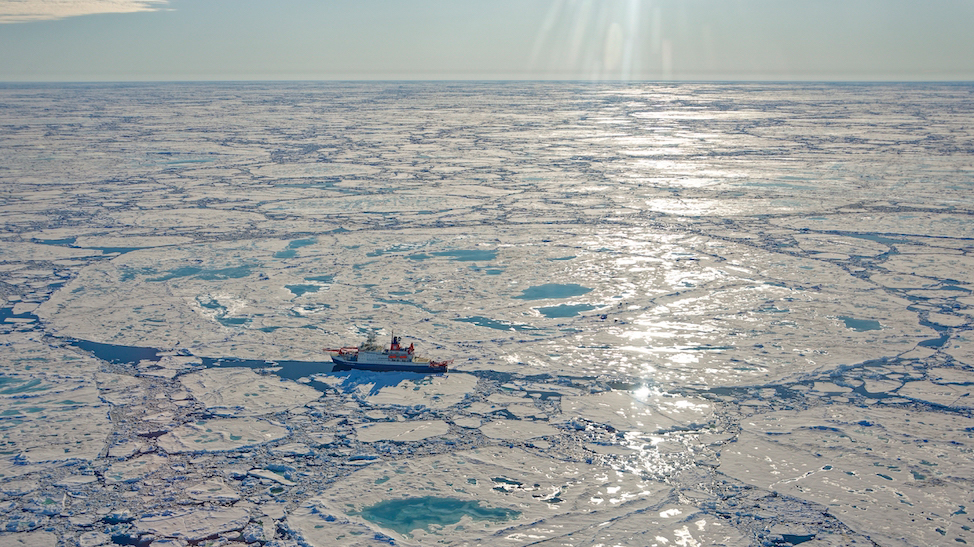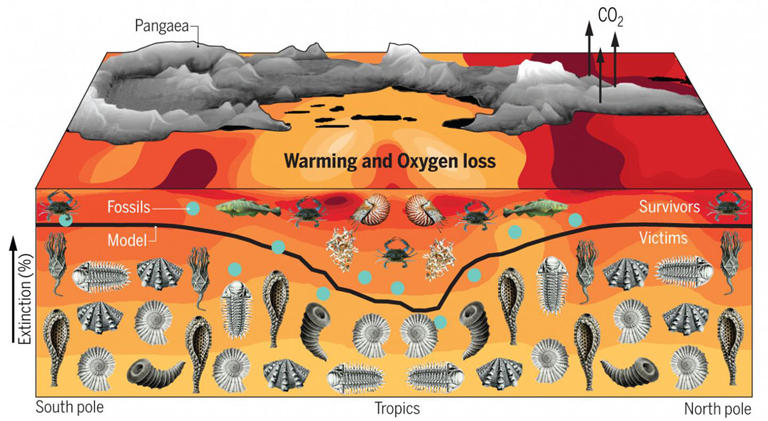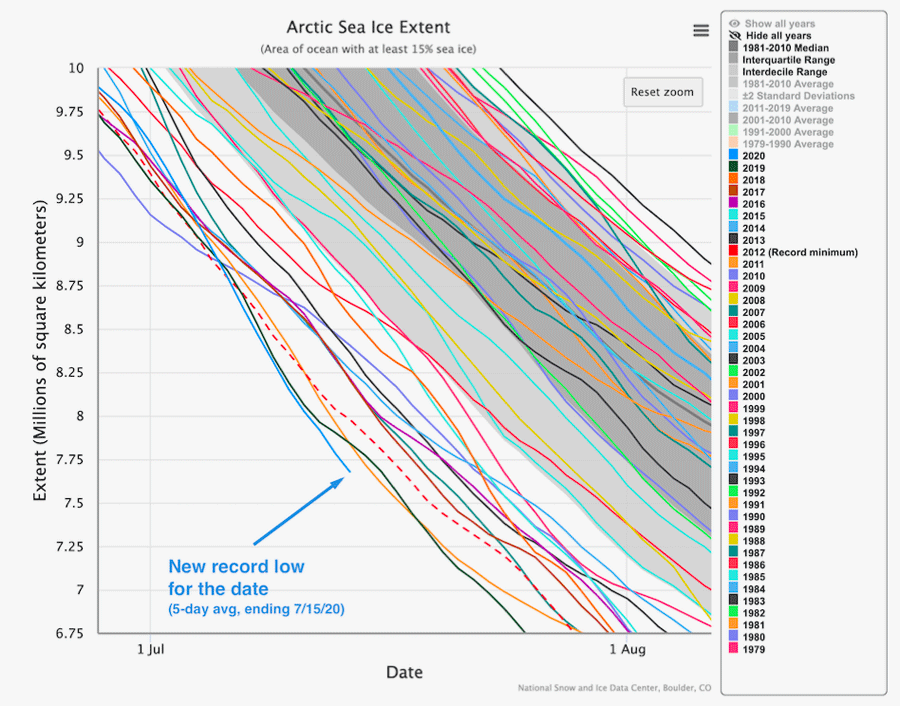Good Afternoon Folks
Just so you know and don't get blindsided by events.
'more heat will accumulate in the Arctic Ocean, threatening that the methane hydrates tipping point will get crossed."
PLEASE SHARE
ARCTIC SEA ICE GONE IN TWO MONTHS
All I can say is that we are in a heap of trouble - Where 's the media coverage? Government? NGO's?
This is an all hands on deck matter and we are quickly running out of time. Someone needs to sound the horn.
This is the biggest crisis humanity has ever faced; we are asleep at the switch - maybe we don't know where it is?
Best Regards
TM
ALSO, SEE " THE IMPORTANCE OF ARCTIC SEA LIFE " BELOW
Arctic sea ice could disappear completely within two months' time
Arctic sea ice fell by 3.239 million km² in extent in 25 days (i.e. from July 1 to 25, 2020). Melting will likely continue for another two months. If it continues on its current trajectory, the remaining 6.333 million km² of Arctic sea ice could disappear completely within two months' time.
The fall in extent over the next two months' time may not remain as as steep as it was in July, yet the sea ice still could disappear completely. One reason for this is that, over the years, sea ice thickness has been declining even faster than extent. The rapid decline in sea ice thickness is illustrated by the sequence of images below.
The image on the right further illustrates that sea ice is getting very thin, which threatens the latent heat tipping point to get crossed.
Sea currents and the Coriolis force will make that the influx of warm, salty water into the Arctic Ocean will continue. With no buffer of sea ice left underneath the surface of the sea ice to absorb incoming ocean heat, more heat will accumulate in the Arctic Ocean, threatening that the methane hydrates tipping point will get crossed.
The navy.mil animation below was run on July 27, 2020, and shows sea ice thickness over 30 days (last 8 frames are forecasts for July 28 - August 4, 2020).
Here's another indication that the buffer is disappearing fast. North of Greenland and of the Canadian Arctic Archipelago, some 700 km from the North Pole, sea ice is disappearing, precisely where the thickest sea ice used to be located.
High greenhouse gas levels are causing high temperatures over the Arctic and high ocean temperatures.
On July 25, 2020, sea surface temperatures in the Arctic Ocean were as high as 20.8°C or 69.4°F (at the green circle on above image).
At that same location, on July 22, 2020, sea surface temperatures in the Arctic Ocean were as much as 17°C or 30.5°F higher than the daily average during the years 1981-2011.
This location is where the Pechora River flows into the Barents Sea (the green circle pointed at by the white arrow on above image).
This location is where the Pechora River flows into the Barents Sea (the green circle pointed at by the white arrow on above image).
Distortion of the jet stream is causing more extreme weather, resulting in the recent lengthy heatwave over Siberia that has heated up the water of rivers flowing into the Arctic Ocean.
Ominously, a cyclone appears to be developing over the Arctic Ocean, as illustrated by the image on the right.
Underneath on the right is a forecast for August 7, 2020, showing rain over the North Pole.
In summary, Arctic sea ice may disappear completely over the next two months, and there are at least five reasons why this could occur:
• Low Arctic sea ice extent;
• Low Arctic sea ice thickness;
• High ocean temperature;
• High greenhouse gas levels and high temperatures over the Arctic;
• Distorted jet stream causing extreme weather such as storms resulting in sea ice collapse.
The situation is dire and calls for immediate, comprehensive and effective action, as described in the Climate Plan.
Links
• NSIDC Arctic sea ice
• Polar Portal - sea ice volume
• NASA Worldview
• Arctic Hit By Ten Tipping Points
• Fast Path to Extinction
• 2020 Siberian Heatwave continues
• Climate Plan
IMPORTANCE OF ARCTIC SEA ICE
Good Evening Folks;
Here is a peer-reviewed recent paper written by Dr. Guy R McPherson, published on July 25, 2020, that among other things, corroborates and affirms the consequences of Arctic Sea Ice melting as set out in the Arctic News'report in the previous email.
The Role of Conservation Biology in Understanding the Importance of Arctic Sea Ice
Abstract
The transdisciplinary nature of conservation biology is pivotal to understanding the concept of near-term human extinction. The rate of environmental change impacts the habitat of all organisms, and loss of habitat underlies extinction. These concepts apply to all species, including Homo sapiens. The ongoing and expected rates of environmental change indicate human extinction in the near term, with loss of Arctic sea ice an important driving force.
Dr. Guy R McPherson
T. A McNeil
CEO and Founder
First Financial Insights Inc.












